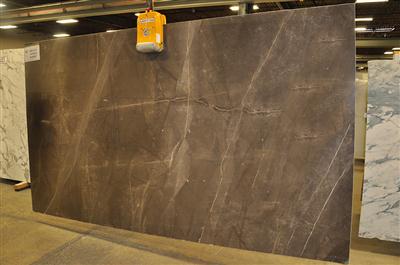Choosing Between Marble and Granite Stone
Natural stone has many structural and decorative uses inside a home or building and the application of the stone will help determine which natural stone is best to use. There are several types of natural stones used for many home applications such as marble, granite, quartz, limestone, and soapstone among others, with granite and marble being among the most popular choices. Granite and marble are each beautiful natural stones that come in many impressive colors, patterns, and veining but they are best suited for different purposes. This guide will help you choose between marble and granite stone for different applications in your home.
Choosing Natural Stone Based on Application
Natural stone can be used for many different applications inside and outside a home including flooring, countertops, interior walls, tub surrounds, and outside pavers. The application will largely determine whether it is best to use marble or granite because they are not equal in strength or durability.

Bronzo Armani 2cm polished marble slabs
Marble is formed through heat and pressure metamorphosis in temperatures exceeding 1800˚ F and it consists largely of limestone. It has been used to build statues and buildings since ancient times and it is very durable when used for applications with light direct contact such as marble flooring, walls, or tub surrounds. Marble is not a good choice for countertops because the softness of the stone makes it easy to scratch and the minerals in marble countertops are reactive to acids in vinegar and citrus which causes stains on the surface.
Granite is an igneous rock that forms naturally under intense heat and pressure that melts minerals such as quarts, mica, and feldspar into one granite stone. This fusing of minerals makes granite one of the strongest and most durable natural stones available and it is suitable for just about any home application including flooring, walls, and exterior pavers. Granite is the best choice for kitchen countertops because granite countertops are scratch, heat, and stain resistant and the minerals do not react as strongly to acids found in citrus, vinegars, and cleaning products. Granite is also low maintenanceMaintenance is the routine care, inspection, and repair of a... More and one of the most affordable natural stones available.
Choosing Natural Stone Based on Appearance
Once you have decided which natural stone to use for your application, the next step is to choose a color or pattern that works with the application or surrounding décor. Pure marbles contain calcite or dolomite which gives the marble its white color and the presence of foreign minerals can cause a variation in the whiteness and patterns. Marble has an elegant look to it that many natural stones lack and it can be finished with polished, honed, or brushed finishes for a formal or casual look. Many homeowners may choose marble for certain applications based on its natural beauty.
Granite is much more versatile than marble as far as available colors and patterns because of the wide range of minerals that form the stone. Granite slabs can be found in a variety of colors such as whites, reds, blues, dark browns, greens, grays, and golden hues and the patterns and veining can vary widely from stone to stone. Choosing granite for natural stone applications will give you many more style and color options than other natural stones.
If you are trying to decide on a natural stone for countertops, flooring, or some other home application, consider the application to decide on a stone before deciding on a color. Marble stone has an elegant style and it is durable in light traffic applications. Granite stone is one of the strongest natural stones available and it works in any household application with a variety of colors and styles available. Do not hesitate to contact a natural stone professional for advice on choosing a stone type for your next project.













